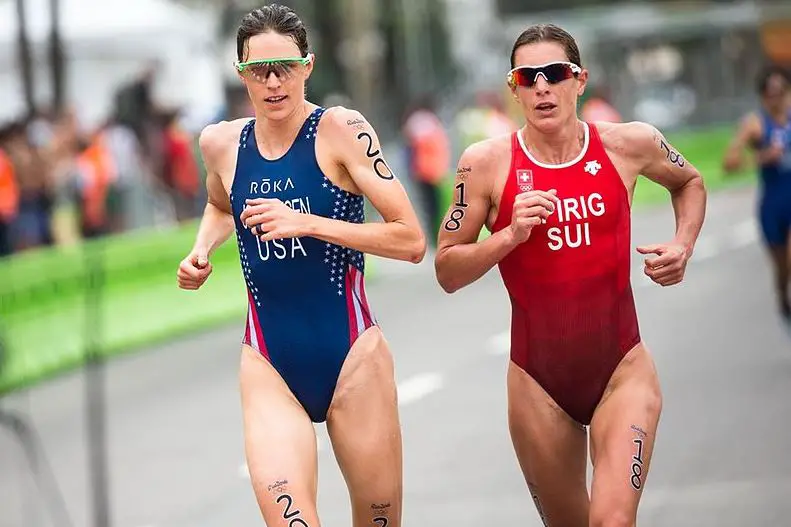Sports Specific

Ready to Tri Pilates? Part 1
In recent years, triathlons have gained huge popularity. The ultimate fitness challenge, triathlons are major endurance competitions involving swimming, cycling, and running. First seen in California in 1974, the triathlon finally made it into the Olympics, debuting in Sydney in 2000. Since its founding, triathlon has grown significantly and now includes thousands of races with hundreds of thousands of competitors worldwide each year.
In terms of their training, triathletes of all distances will be swimming, biking, and running. However, training those three triathlon components alone does not equal success. Much has to be thought of technique to be successful. In order to move faster in water, on a bike, or by foot, one must be able to move effectively. This can be affected by postural issues, pre-existing injuries, available range of motion, and core strength. The stronger and healthier these are, the better chances for success in performance. Obviously, these issues can be tackled and improved through Pilates training. Pam Kallio, a USA Triathlon Level 2 Coach and successful Ironman Competitor, believes that all triathletes should incorporate Pilates into their personal triathlon training regimen. She believes that the benefit of Pilates training is “without out a doubt, core strength. Everything [the triathlete] does involves core strength. Triathletes can do all of the ab exercises in the world at the gym, but it doesn’t accomplish what Pilates can do. Better Core Strength equals better technique equals better performance.” Transferring movement through a stronger core will allow the triathlete to move more effectively through each stroke and stride.
When planning a Pilates workout for a triathlete, there are many concepts to think about. The first, and most obvious, is the activities involved and the intensity of the activities performed. All three triathlon components include mainly movement solely in the sagittal (forward) plane. This is going to result in an imbalance in the anterior and posterior sides of the body. It is important to assess the triathlete with both postural and functional tests. You will most likely see tight shoulder girdles and pectorals, a forward neck, tight hip flexors and hamstrings, and overdeveloped quadriceps. Pilates exercises should be chosen to alleviate these issues and rebalance the body. Chest Expansion, Long Box Series, and Eagle for example, help open the chest as well as strengthen the Posterior Deltoids, Rhomboids, and musculature of the lower back. Bottom Pelvic Lift and Leg Springs allow for a rebalancing of the quads and hamstrings, and help stabilize the pelvis. Any extension exercise will help open the chest and correct kyphotic posture. Be aware that most athletes will have a dominant side, and exercises will be better preformed using one leg or arm at a time.
Along with the general tightness, each triathlon component has its own set of issues as related to the sport. For example, most triathletes have a weakness in swimming. “If you learn to swim as an adult rather than as a child, the big mistake is feet dragging. Proper body position is related to core strength,” says Coach Kallio. Spinal stability and trunk strength play a huge role in swimming, as the body is suspended in water. The abdominal series and swam series on the Cadillac would be a benefit to the strength needed in the abdominals and lower back to swim properly. Also, rotational spinal and shoulder mobility can be greatly enhanced with Pilates. In running and cycling, the Illio-tibial Bands can become over-strengthened, and lead to knee and back injuries. Stretching the IT Band and strengthening its opposing muscles in the inner thigh are essential. Running also causes a tightening of the lumbar and hamstring musculature, as a result of the shock absorption from the pounding on the pavement and the effort of keeping the body upright and stable during forward movement. It is essential that length is cued during all exercises and to include lower back and hamstring stretches to combat this on-going problem. In addition to all of the hard work and sport-specific training, Pilates can provide an active rest and recovery for triathletes, allowing their muscles to stretch and heal during their off-training days.
Pilates has proven itself once again to be beneficial to athletes. With proper Pilates training, the triathlete will experience a heightened performance. With improved posture, alignment, flexibility and core strength, the triathlete will be able to reach longer when swimming, and pedal powerfully when cycling, and a stride longer when running.





